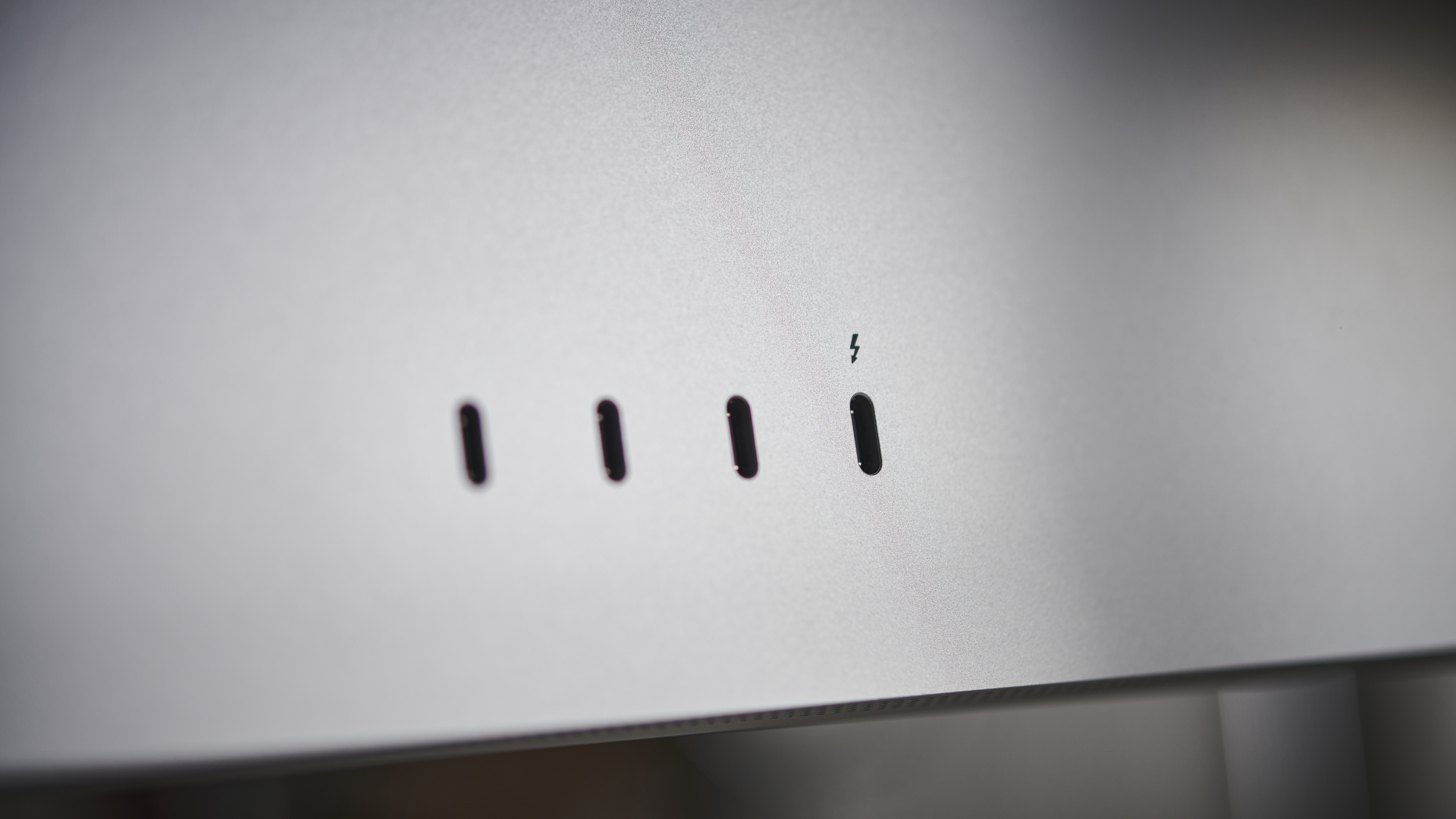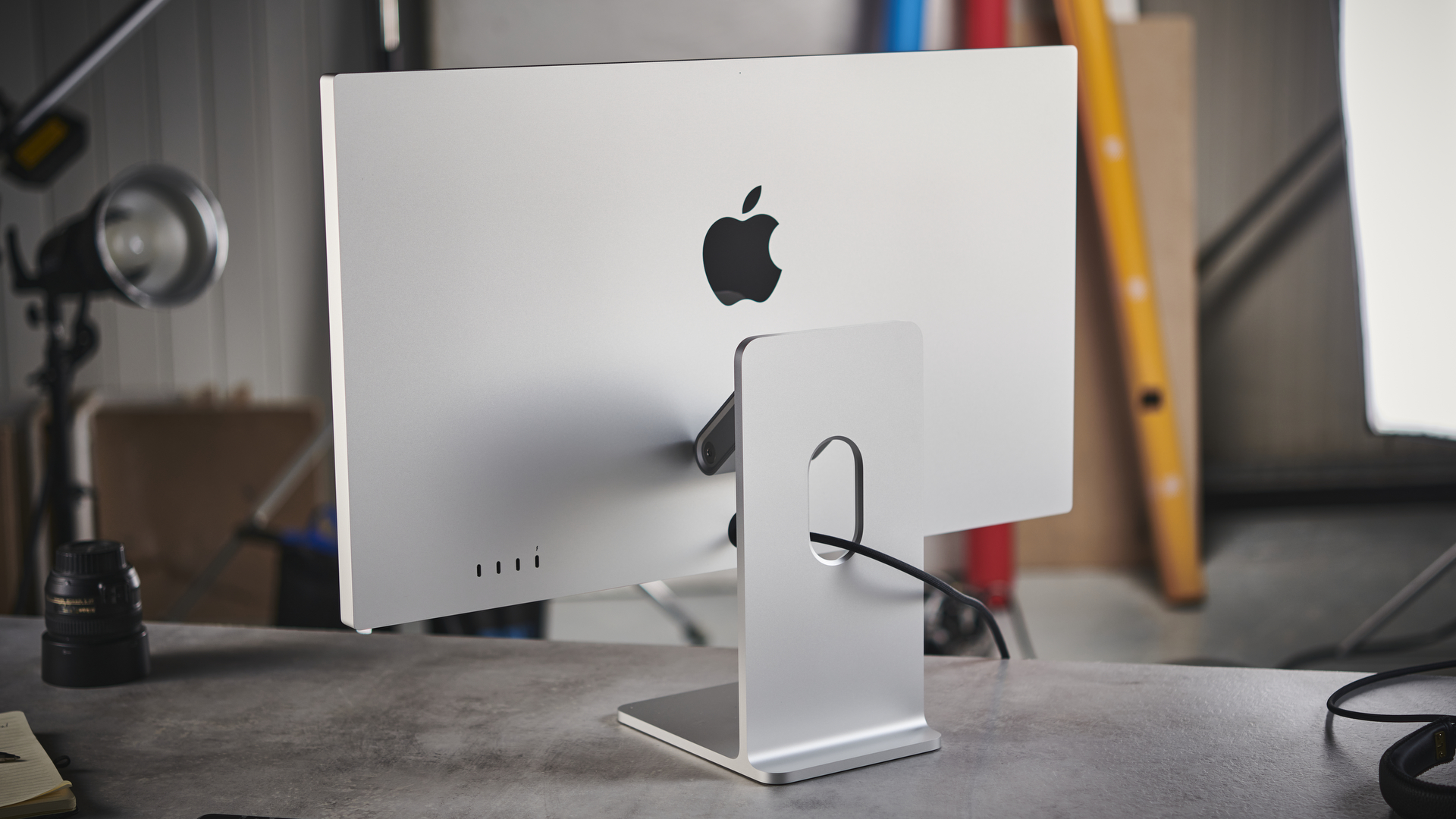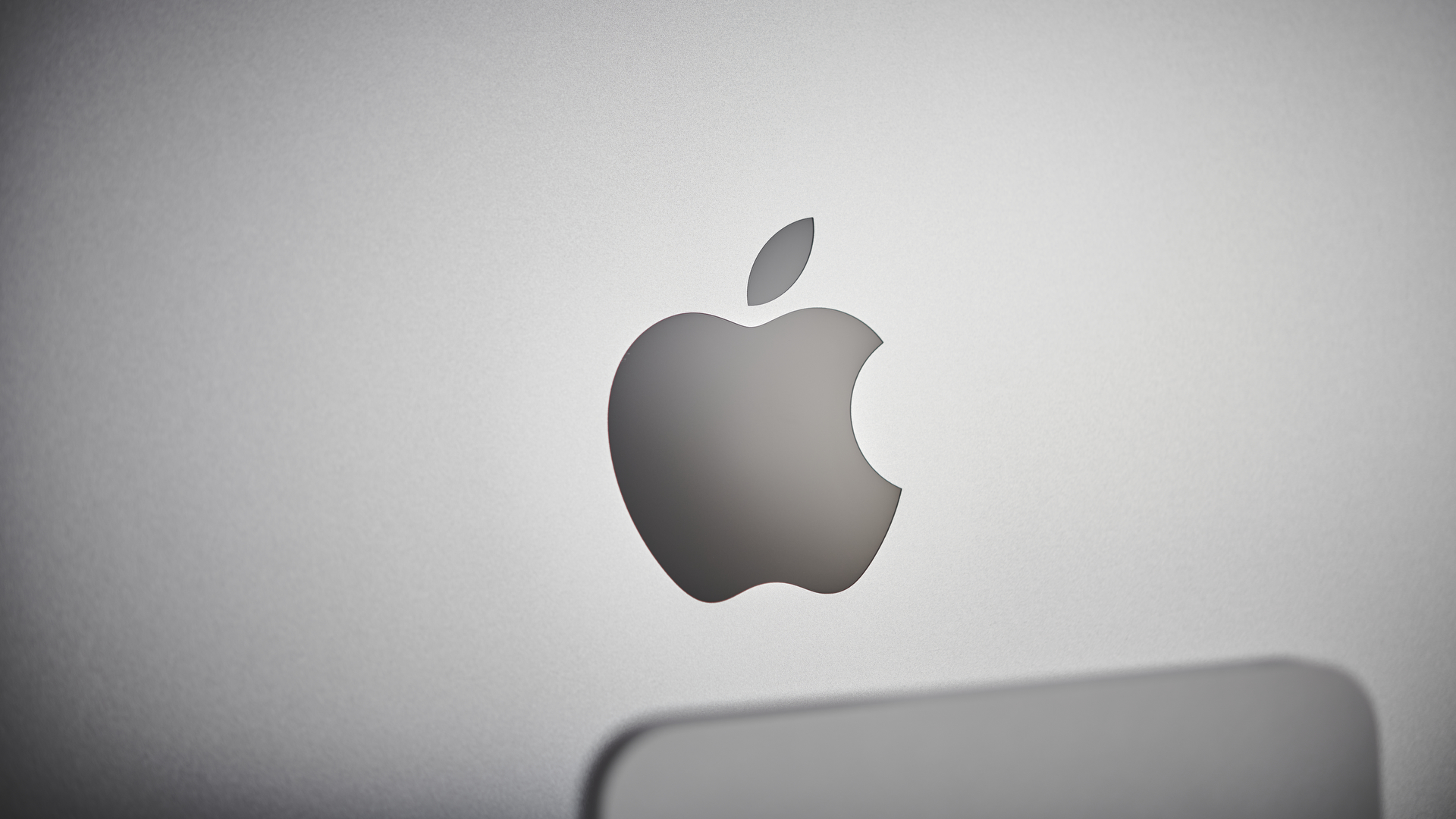TechRadar Verdict
The Apple Studio Display is a good screen for creative professionals, but the lack of certain features means its price is hard to justify.
Pros
- +
Bright and vivid colors
- +
Great speakers
- +
Nice design
- +
Good webcam
Cons
- -
No HDR
- -
Lacks ports
- -
Some features are Mac-exclusive
- -
Better value monitors out there
Why you can trust TechRadar
The Apple Studio Display is the new monitor from the fruit-themed company that’s aimed at creative professionals. Launched alongside the Mac Studio during Apple’s March Event, the Studio Display, as the name suggests, has been primarily designed as an accompaniment to the Mac Studio (which is sold without a display), but you can also plug in other Apple products to use it as a screen.
You can also use it as a monitor for a Windows PC, but you’ll be missing out on certain features. This means the Studio Display is one of the more niche products Apple has released, and if you’re not in the rather narrow market that the Studio Display has been made for (creative professionals already invested in the Apple ecosystem), then this isn’t going to be a product for you.
As far as monitors go, the Studio Display is very expensive, starting at $1,599 (£1,499 / AU$2,499). Creative pros may not balk at that figure, but that’s a big price tag for a 27-inch display for mainstream users.
Still, it’s a lot cheaper than Apple’s Pro Display XDR screen, which launched at $4,999 (around £4,700 / AU$7,000). The Studio Display also comes with a choice of a tilt-adjustable stand, or a VESA mount adapter. Sure, including a stand with a monitor shouldn’t be noteworthy, but Apple received a fair bit of ridicule by not including one with the expensive Pro Display XDR.

Tough decisions
However, you still have to choose between the stand or the VESA mount, when other monitors would include both. If you want a stand that both tilts and is height adjustable, however, you’ll need to spend an extra $400 / £400 / AU$600. It’s these kinds of ‘hidden’ extra costs that try a lot of peoples’ patience when it comes to Apple.
You can also configure the Studio Display to come with nano-texture glass to help minimize reflections. This costs an extra $300 / £250 / AU$500. We’ve used other Apple devices with the nano-texture glass and have been impressed with the effect, especially in conditions where there is a lot of ambient light sources that could ordinarily cause distracting reflections or glare. It’s far from a necessary upgrade, but if you hate reflections, then you may want to consider spending a little bit more.

A redesigned 27-inch iMac has been missing in action for a while now, and the Studio Display may be the closest we’ll get to one for the moment. The design of the screen is incredibly reminiscent of the new-look 24-inch iMac, but with a larger screen and without the Mac internals. Hook this screen up to the compact Mac Studio or Mac mini, and you’ll get a similar experience.
Sign up to the TechRadar Pro newsletter to get all the top news, opinion, features and guidance your business needs to succeed!
Meanwhile, the Studio Display’s specs will look attractive to digital creatives and go some way to justifying the high price. The 27-inch screen has a 5K resolution of 5,120 x 2,880, which offers a pixel density of 218 pixels per inch (PPI). This results in sharp and detailed image quality.
It also supports one billion colors, offers 600 nits of brightness, and comes with the P3 wide color gamut, which is particularly useful for video editors. There’s also the now obligatory support for True Tone, Apple’s proprietary tech that adjusts the image on the screen depending on ambient light conditions. This can make a nice difference, but as always, for professionals that require high color accuracy, this feature is best switched off.

Performance
In use, the Studio Display offers bright and vivid image quality, as well as very good viewing angles. Even if you sit at an awkward angle away from the Studio Display, the images being shown still look good, making it a good choice of screen if you often have people crowding around you, and you want to show them your work.
The viewing angles are negated by the reflective screen, however. When viewing from an angle, you can often all too easily see reflections on the screen, and this can be distracting. Upgrading to the nano-texture screen will likely eliminate this (we didn’t get to try the Studio Display with this configuration, sadly), but as we mentioned earlier, that means paying extra.
The Studio Display also has a 12MP ultra-wide webcam with 122-degree field of view built-in, a studio-quality three mic array and six speakers, and these are all high quality enough that you may not feel the need to plug in external peripherals.
The speakers are very good, offering loud and clear sound quality with a good depth of bass. Watching movies on Apple TV+ looked very good, despite the lack of HDR, and the speakers did a fine job of accompanying the action on screen with punchy sounds and clear dialogue. Music also sounded very good, considering these are built-in speakers.
The special audio support was less impressive. We tried a few tracks in Dolby Atmos and didn’t really feel like the sound was coming from around us. Virtualized surround sound is always a challenge to get right, and can never compare to physical speaker setups, and that’s true with the Studio Display, unfortunately.

The microphones, meanwhile, do a very good job of recording your voice while minimizing background noise. They also do a decent job of recording musical instruments. While professional musicians and music producers will want to use a proper microphone, it’s still handy for quickly recording demos when the inspiration strikes.
The webcam is also good, and in this new world where many of us rely on making video calls with co-workers, clients, friends and family, having a high-quality built-in webcam is a real bonus. The footage is clear, and the Center Stage feature does a good job of keeping you in shot when you move around. It's worth noting that since reviews went live, some other publications found the results of the webcam to be quite poor. We used the webcam in an office with plenty of ambient light, which may have resulted in better results.
The webcam, speakers and microphones are all bolstered by the A13 Bionic chip which is also included in the Studio Display. This is a cool feature, and one that arguably does the most to make the Studio Display stand out in a crowded market.
The A13 Bionic, which is also found in modern iPhones and iPads, adds Center Stage to the webcam. This intelligently pans and zooms the webcam to keep you in frame, even if you move around. Low light performance is also improved by the A13 Bionic, while the speakers can take advantage of Dolby Atmos special sound for 3D-like audio. You can also use Apple’s virtual assistant, Siri, for hands-free control.
These are all nice features, but apart from arguably the increased webcam quality, they – again – aren’t really necessary. They also only work with compatible Macs, MacBooks and iPads. If you have an aging Mac that can’t run macOS Monterey 12.3 or later, or an iPad that can’t run iPad OS 15.4 or later, then you can make use of these features. The same goes for hooking up a Windows 11 laptop, for example. It’ll work, but you won’t get those A13-powered extras.

Missing features
For a monitor of this price, there are some noticeable features that aren’t included with the Studio Display. Perhaps the most noticeable is the lack of HDR (High Dynamic Range). This feature, which is used for greater contrast and more life-like colors, is a mainstay of monitors (and TVs) these days, even budget screens (with varying degrees of success), so its absence here is a real shame. If you’re a video editor working on a TV show or film which will be shown in HDR, for example, you won’t be able to see the effect on the Studio Display.
The peak brightness of the Studio Display is 600 nits, and while that’s perfectly fine, and still offers a nice, vibrant, image when in use, pales in comparison with the screen of the MacBook Pro 14-inch, for example, which offers a peak brightness of 1,600 nits. The MacBook Pro 14-inch, and the 16-inch model as well, has a Liquid Retina XDR display with mini LED technology – which makes the screens easily the best you can currently get on a laptop.
So, the fact that the Studio Display doesn’t come with the same tech is a disappointment. It’s likely this is because using the tech in the 27-inch screen of the Studio Display would push the price up to ridiculous levels, but it does mean the new display is outclassed by the MacBook Pro.
The Studio Display also maxes out at 60Hz. While this is standard for 4K and 5K monitors, we are seeing more recent ultra-high-definition screens coming with support for higher refresh rates. The higher the refresh rate, the smoother and more responsive it can feel to work on it. With the new MacBook Pros coming with ProMotion support – offering up to 120Hz refresh rates, it again feels like a missed opportunity.
The Studio Display also doesn’t come with the sort of ports you’d expect from a monitor. There are no HDMI or DisplayPort options. Instead, there’s a single Thunderbolt 3 (USB-C) input, which can also charge the device you’re connecting. There are also three USB-C ports in a hub, for connecting peripherals.
This shows the Mac/iPad-centric design of the Studio Display. If you're looking for the best monitor for the Mac mini or other Apple devices, then this is a nice addition that keeps your desk free from various cables. Using a single USB-C cable for hooking the monitor up to your device is certainly appealing.
However, for older devices, or desktop PCs, which don’t have a USB-C port, then the Studio Display isn’t going to work – and you can certainly forget about plugging in a games console. While no one would buy the Studio Display for playing games on, it’s nice to have a monitor that can be used for multiple purposes. The Studio Display isn’t that kind of monitor.

Buy it if…
You’re a creative professional
The Studio Display is tailored to creative professionals, and as far as professional-grade screens go, it’s reasonably affordable.
You’re buying a Mac Studio
It’s no coincidence that the Studio Display was launched at the same time as the Mac Studio – they work together brilliantly.
You wanted a 27-inch M1 iMac
It doesn’t look like Apple will be releasing a new 27-inch iMac powered by its M1 chips any time soon, so the Studio Display coupled with as Mac mini or Mac Studio is a decent (though pricey) compromise.
Don't buy it if…
You want a multi-use monitor
The Studio Display is only designed for creative work, and only has a USB-C input, limiting how useful it is.
You edit HDR footage
The lack of HDR support is disappointing when watching media, but it's a deal-breaker if you edit HDR footage.
You use Windows devices
While the Studio Display works fine with Windows laptops and PCs, you miss out on some of its best features if you're not using a Mac.
- These are the best monitors for photo editing

Matt is TechRadar's Managing Editor for Core Tech, looking after computing and mobile technology. Having written for a number of publications such as PC Plus, PC Format, T3 and Linux Format, there's no aspect of technology that Matt isn't passionate about, especially computing and PC gaming. He’s personally reviewed and used most of the laptops in our best laptops guide - and since joining TechRadar in 2014, he's reviewed over 250 laptops and computing accessories personally.
